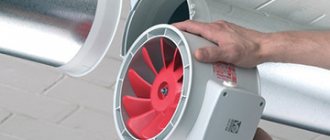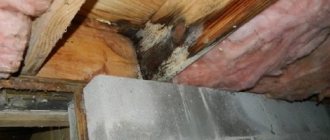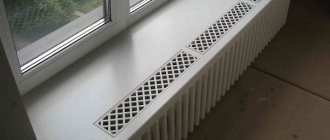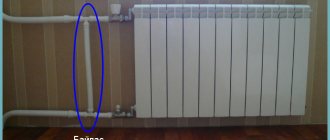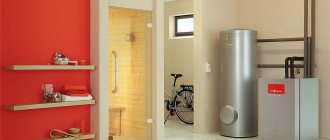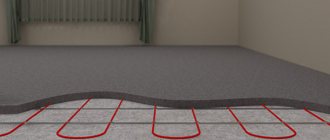Purpose of basement ventilation
At a distance of 1-1.5 meters below ground level, the soil in our middle latitudes does not freeze even in severe winters. The heat it generates heats the air in the basement, which rises upward and, when it comes into contact with cold ceilings, the moisture contained in it is deposited on them in the form of condensation. This leads to increased humidity levels and “drip” from the ceiling. And since the cellar is a closed room, without windows or vents, the air in it stagnates.
All this leads to the following negative consequences:
- constant dampness causes rotting of wooden parts of cellar equipment and corrosion of metal ones;
- mold that certainly appears in such conditions, together with insects and pathogenic microbes, has a detrimental effect on the products stored in the cellar;
- If you often open the cellar lid to dry, moisture penetrates into the garage and causes corrosion of the car body and its other components.
The result of storing a car in a damp room Source svarkaprosto.ru
But you need to know how to properly make ventilation in the garage cellar with your own hands not only for these reasons. The car itself or the workshop set up in the garage can have a detrimental effect on the vegetables and preserves in the cellar, as exhaust gases and vapors of toxic substances will penetrate into it. They need to be removed somehow so that they do not settle on the products.
Finally, it is necessary to maintain a certain temperature in the storage facility, preventing severe air hypothermia in winter and overheating in summer. That is why it is necessary to establish constant and, preferably, controlled air exchange. Especially if there is close groundwater, which does not allow the room to dry naturally.
Note! Not only the cellar must be ventilated, but also the garage itself, under which it is located.
Garage ventilation system Source www.project-home.ru
How much ventilation does a vegetable pit need?
A classic vegetable storage area under a private garage (box) is a room 2–2.5 meters wide/length and up to 2 meters high. The descent into it is usually arranged from a viewing hole using a ladder.
As a result, the cellar for vegetables and jars of pickles is obviously below the soil freezing level, which guarantees that the temperature in it remains above zero even in winter.
The humidity in the vegetable storage should be at 80–95%. If it is lower, then the vegetables will begin to dry out, and at higher levels, potatoes, beets and carrots will begin to quickly rot
Ventilation in a garage vegetable store is arranged to:
- maintain the air temperature in the pit at a level from 1 to +10 0C throughout the year;
- remove excess moisture and carbon dioxide with ethylene from the cellar;
- ensure constant air exchange with the flow of clean street air inside.
During storage, vegetables “breathe” and continue to ripen or gradually begin to rot. As a result of these processes, heat and moisture are constantly released. And if they are not removed from the vegetable storage, the humidity inside will reach 95–100%, and the temperature will rise above 10–15 0C. Ultimately, this leads to condensation and the development of rot, followed by loss of yield.
Ideally, the following conditions should be provided in the vegetable pit under the garage:
- temperature – plus 1–5 0С;
- humidity – 85–90%;
- air exchange – 1 time/hour (about 50–100 m3/ton of vegetables*hour);
- light - darkening with the absence of direct sunlight, lighting is turned on only when people are in the cellar.
In reality, the indicated indicators can only be achieved by installing a forced air ventilation system in the vegetable pit under the garage. Moreover, it will have to include automation for stable maintenance of the microclimate.
This ventilation option will cost several hundred thousand rubles. Spending such amounts is completely unprofitable. Therefore, most often the ventilation in a garage vegetable store is built using the usual natural scheme of a pair of pipes.
Ventilation methods
In a room that is locked on all sides and has no cracks, air can neither flow in nor leave it. If you provide him with access inside, but do not provide for how to make an exhaust hood in the basement to remove heated polluted air and gases, this will also do nothing.
In order for air exchange to occur, it is necessary to arrange an “entry and exit”. The inlet is called the supply hole, and the outlet is called the exhaust hole. These are mandatory elements of any type of ventilation system. And it can be natural, forced and mixed. Which one to choose depends on the size and location of the garage, climatic conditions and some other factors.
Natural air exchange
Cold air always sinks because it has greater density than warm air. The heated one, accordingly, rises upward. The system of natural air circulation in any room is built on this principle. But if it is easy to provide it in above-ground buildings, then in basements you cannot simply make holes in the walls if there is no exit to the street behind them. Therefore, both inflow and outlet are provided using a pipe system.
Diagram of natural air exchange in the basement Source metpromintex.ru/
See also: Catalog of projects of houses with a garage
The diagram clearly shows how to make ventilation in the garage basement. To do this, two holes are punched in the ceiling and pipes are inserted into them. The supply pipe descends almost to floor level, and its upper end is led out through the garage wall to the street just above ground level. The lower end of the exhaust pipe is fixed just under the ceiling, and the upper end goes outside through the roof.
The farther the inlet and outlet openings are from each other and the greater the height difference between them, the better the air circulates between them. In order for the system to operate without interruption, it is necessary to ensure free passage of air masses through the pipes. Therefore, they need to be protected from moisture freezing inside by insulating the outside, and from debris, dirt and other foreign objects getting into the cavity. To do this, a cap is installed on the exhaust pipe, and the supply pipe is covered with a net to prevent leaves, insects and rodents.
You can purchase special ventilation plugs with grilles Source remkasam.ru
Advice! It is recommended to install an adjustable damper on the “inlet” in order to close it in severe frosts, preventing overcooling and freezing of food. And install a drip tray on the hood for draining condensate. Or simply pour a pile of fine gravel on the floor under the pipe.
This method has several advantages, and the main one is its low cost, since you can make ventilation in the basement with natural air exchange on your own, spending money only on pipes and material for their insulation and sealing of holes in the ceilings.
More cons:
- The cellar will only be well ventilated if there is a large temperature difference between it and the outside. In warm weather, there may not be enough draft for normal air circulation;
- if there is high humidity in the room due to the proximity of groundwater or the storage of large quantities of fresh vegetables and pickles, dampness may remain in it if the air flow is insufficient;
- air exchange can be greatly influenced by weather conditions: wind, high snow cover blocking the outlet of the inlet, etc.
What kind of ventilation is suitable for a cellar in winter?
If the basement is small (usually 5-7 m²), then the effect of natural ventilation for good preservation of vegetables and canned goods during the cold season will be quite sufficient.
Features of air exchange in winter are characterized by increased draft, which decreases with the onset of warming outside.
The essence of natural ventilation is the presence of two pipes: exhaust and supply. The edge of the first is installed under the ceiling, and light warm air comes out through it, and the second should end below, not far from the floor, and an influx is carried out using this channel.
Natural ventilation can be simplified to a structure with one pipe - an exhaust pipe. There may also be an even more economical option when they equip a hole in the outer wall and cover it with a louvered grille.
If the cellar is located in a large room, then an arbitrary hood may not give the desired result. Then forced ventilation will come to the rescue to normalize air humidity. It differs from natural ventilation in the use of fans. This circulation works flawlessly even in calm weather.
There is another method of forced ventilation. At the top of the hood there is a turbine (rotating deflector), which creates additional draft.
Air flows set it in motion and rotate the fan, enhancing the exhaust effect.
Before installing ventilation, cellar owners may have a question about what type to choose. The fact is that if the area is relatively small, then installing a forced exhaust can cause harm to the stored products: too much ventilation can dry out the vegetables and they will lose their properties.
Video description
The video shows how such ventilation is arranged in a concrete garage:
However, in small cellars built in dry soil, well-waterproofed and insulated, natural ventilation works well and copes with its functions.
See also: Catalog of companies that specialize in ventilation and air conditioning
Forced ventilation
If you need to decide how to properly make a hood in the garage basement so that there is no dampness, then the already described system should be equipped with a supply and exhaust fan. They come in different types:
- Duct - installed on ventilation ducts.
- Centrifugal and axial - mounted in openings in the wall.
Duct fans are easily installed in the system due to the coincidence of the installation diameter with the diameter of the pipe Source cdn.fotosklad.ru
These mechanisms can be selected according to the power and volume of air exchange, many of them are equipped with a timer and speed controller.
Advice! Choose fans in a waterproof casing and be sure to insulate the electrical wiring from moisture.
Such a system will cost much more due to the cost of equipment and its installation, as well as due to the constant costs of paying for electricity. In addition, fans that are turned off, especially those equipped with a check valve, create a barrier to the natural flow of air.
But it also has many advantages, especially if you need to solve such a complex problem as how to properly install ventilation in a large basement with difficult operating conditions:
- The system will remove humid and chemical-contaminated air outside, regardless of the outside temperature.
- The air exchange rate can be set by installing fans with the required parameters depending on the needs of a particular room.
- The microclimate in the cellar is normalized, so that fungus does not appear in it, and the products remain fresh for a long time.
Ventilation in the garage basement in winter
Garage basement ventilation is essential. After all, it has a significant impact not only on the contents of the dungeon, but also on the car itself.
Garage with basement for car
If you want to have proper air exchange in the basement, take the time to understand two issues. Firstly, how the ventilation works. Secondly, whether it requires reconstruction or improvement. This will ensure the normal condition of the basement contents and eliminate the risk of corrosion of the metal parts of the car stored here.
Installation nuances
It is not always possible to ensure air flow from the street, for example, in a box in a cooperative garage or built into a house. In such cases, the upper end of the supply pipe is led directly into the garage not far from the gate, and ventilation grilles are installed in them.
Advice! Grates should be placed away from internal locks and gate latches to prevent the garage from being broken into through them.
Scheme of natural ventilation without the supply pipe exiting to the street Source 1poclimaty.ru
Hood in the cellar with one pipe
To keep the basement ventilated and dry, even one pipe is enough. Any gaps will play a positive role.
Hood with fan
The only thing worth paying attention to is that the diameter of the air duct tube must be no more than fifteen centimeters. If it is not possible to establish air circulation, it is recommended to organize the process using mechanical awakening. Everything is extremely simple: install a fan in the exhaust pipe.
The main component of an excellent microclimate in the cellar is air humidity, which can be adjusted using a fan. It is important to note that too high a humidity level impairs the quality of ventilation. This happens if groundwater penetrates into the basement, which happens in the spring when the snow melts. During this period, the cellar becomes damp, and the ventilation system is not able to cope with such serious loads.
